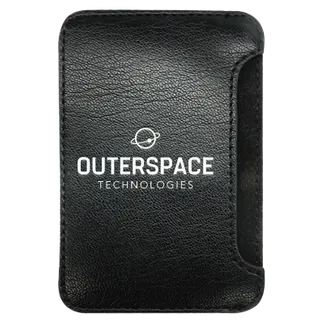Do Phone Wallets Demagnetize Credit Cards? Separating Fact from Fiction
from web site
Introduction
In an increasingly digital world, we rely on our smartphones for a multitude of tasks, from communication to navigation, and even as a means to make payments. Mobile wallets have become an integral part of our daily lives, offering convenience and security when it comes to managing our finances. However, with this technological shift, concerns have arisen about the impact of phone wallets on the magnetic stripe cards we've used for decades, such as credit and debit cards. The burning question is: Do phone wallets demagnetize credit cards? In this comprehensive exploration, we will delve into the science, myths, and best practices surrounding this topic.
Understanding Magnetic Stripe Cards
Before we can answer the question, we need to understand the technology behind magnetic stripe cards. These cards have been in use for several decades and rely on a magnetic stripe to store essential data. The stripe contains tiny iron-based magnetic particles arranged in a specific pattern. When swiped through a card reader or ATM, the data on this stripe is read, allowing transactions to take place.
The information stored on the magnetic stripe includes your account number, name, and other relevant details. While this technology has served us well, it has some vulnerabilities, such as susceptibility to demagnetization.

The Myth of Phone Wallets Demagnetizing Credit Cards
One of the most common myths surrounding phone wallets is that they can demagnetize credit cards. Many people are concerned that the proximity of their smartphone to their cards, especially when stored together in a wallet or purse, may lead to the corruption of the magnetic stripe data.
This myth likely stems from the association of magnets with demagnetization. It is true that strong magnets, like those used in MRI machines or industrial applications, can cause data loss on magnetic stripe cards. However, the magnets inside smartphones are typically very weak and not capable of demagnetizing your credit cards.
The Science Behind Demagnetization
To better understand the science behind demagnetization, we need to explore the key factors at play:
-
Magnetic Strength: As previously mentioned, the magnets in smartphones are relatively weak. They are primarily used for tasks like activating the phone's sleep/wake function or for attaching phone accessories like magnetic car mounts. These magnets are not powerful enough to affect the magnetic stripe on your cards.
-
Magnetic Field Strength vs. Distance: The strength of a magnetic field decreases significantly with distance. In the case of your phone and credit cards, the distance between them in your wallet or purse is typically enough to prevent any meaningful interaction between the weak magnetic fields of your phone and the magnetic stripe of your cards.
-
Magnetic Stripe Resilience: Magnetic stripe cards are designed to be resilient. They can withstand the normal wear and tear associated with being carried in wallets, purses, and pockets without demagnetization. The stripe is coated with a protective layer that helps safeguard the data.
-
Orientation: For a magnetic stripe to be demagnetized, it would need to come into direct contact with a strong magnet and be exposed to it for an extended period. The orientation of the stripe relative to the magnet's field also matters, and most wallets are designed to minimize such contact.

In summary, while strong magnets can indeed demagnetize magnetic stripe cards, the weak magnets in smartphones are not a threat to the integrity of your credit cards. Your cards are designed to withstand the typical everyday situations they encounter.
Common Myths and Misconceptions
To further dispel any misconceptions about the impact of phone wallets on credit cards, let's address some of the common myths and concerns:
-
Stacking Cards in Your Wallet: Some people believe that stacking multiple cards in a wallet can lead to demagnetization. While it's a good practice to avoid keeping multiple magnetic stripe cards together, the risk of demagnetization primarily comes from factors like age and wear, not from simply being in close proximity to each other.
-
Leaving Cards Near Electronics: Credit cards may be accidentally placed near electronic devices, such as smartphones, laptops, or speakers. However, these devices are not strong enough to cause demagnetization.
-
Using Cardholders: Cardholders, designed to protect cards, do not demagnetize them. In fact, cardholders can provide an extra layer of protection by shielding cards from potential external magnetic fields.
-
Demagnetization Over Time: Over time, magnetic stripe cards can naturally degrade due to wear and tear. The more you use and swipe your card, the more likely it is to show signs of wear, which can affect its functionality. This is often mistaken for demagnetization due to other factors.
Best Practices for Protecting Your Credit Cards
While phone wallets are not a threat to your credit cards, it's still essential to take proper care of your cards to ensure they function correctly and remain secure. Here are some best practices:
-
Use Cardholders: Consider using a cardholder or a dedicated card slot in your wallet to protect your credit cards from physical wear and external influences.
-
Avoid Excessive Bending: Try to avoid bending your credit cards or subjecting them to excessive pressure, as this can cause physical damage.
-
Keep Cards Dry: Exposure to moisture can damage the magnetic stripe. Keep your cards dry and avoid storing them in wet or damp environments.
-
Monitor Card Condition: Regularly inspect your credit cards for signs of wear or damage. If you notice any issues, contact your bank for a replacement card.
-
Stay Informed: Be aware of potential scams and fraud attempts. If you suspect any unauthorized use of your credit card, report it to your bank immediately.
Conclusion
In conclusion, the fear of phone wallets demagnetizing credit cards is largely unfounded. The myths and misconceptions surrounding this topic are more rooted in speculation than in scientific fact. While magnetic stripe cards are vulnerable to demagnetization by strong magnets, the magnets inside smartphones are not strong enough to pose a threat.
